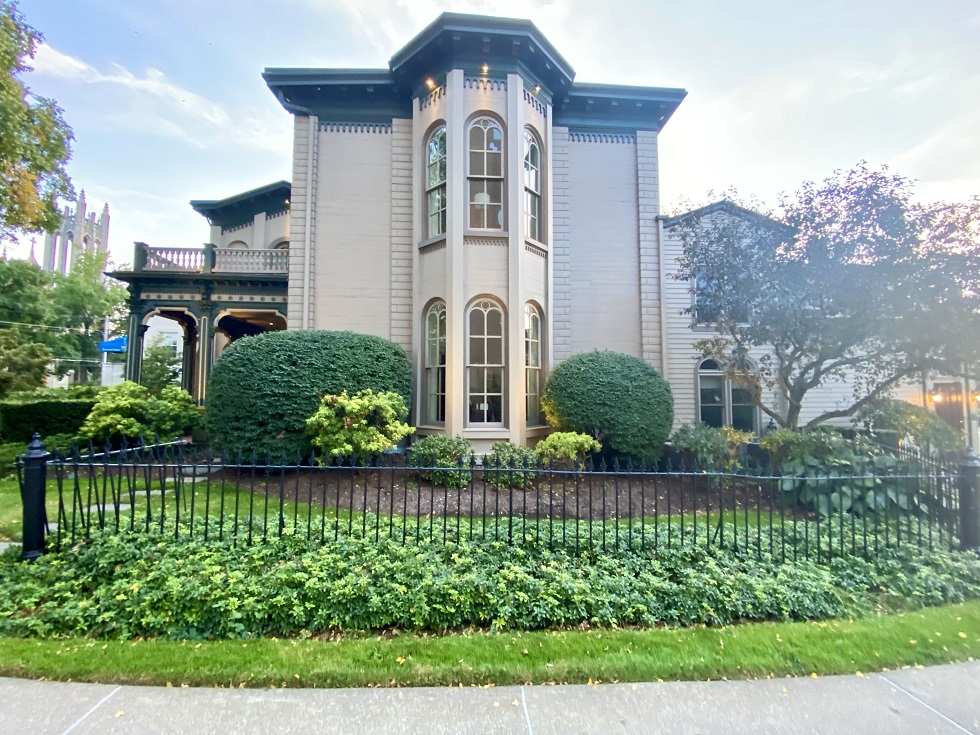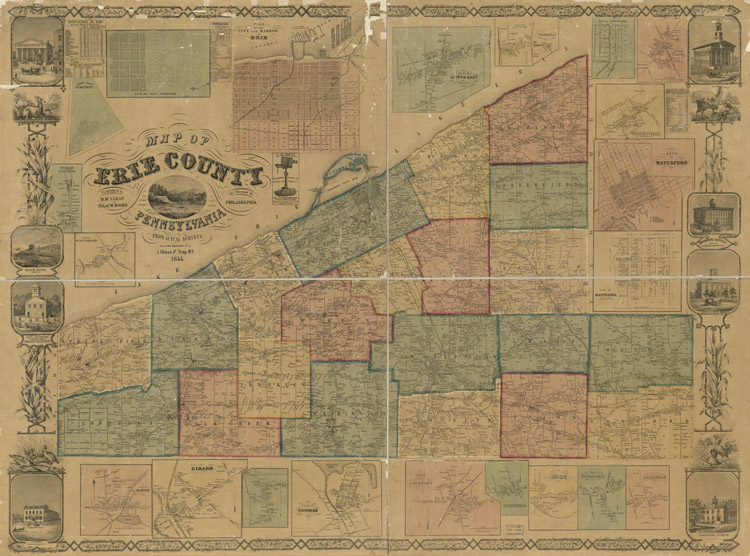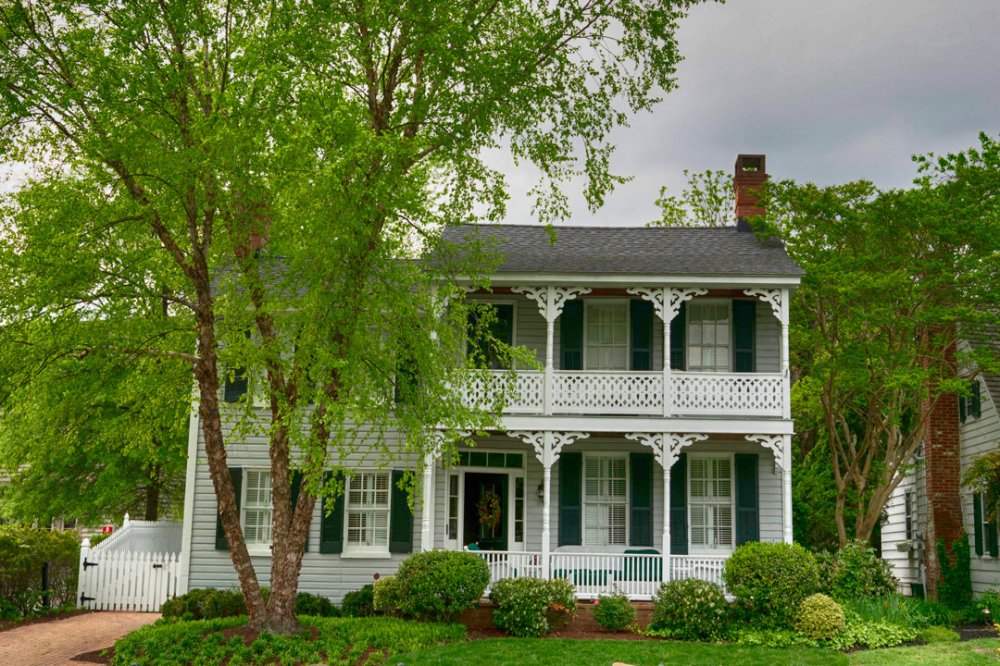How to Find Out The History of a House
The median age of owner-occupied homes in the United States is 39, but this figure varies dramatically from state to state. For instance, in Pennsylvania, the median age of a home is 57. With decades of history under a roof, homebuyers and homeowners have asked, “How do I find out the history of a house?”
Every house has a story, from when it was built and who lived there to how it’s been renovated and what the land was initially used for. If you’re interested in researching the history of a house, either because you’re interested in buying it or you’re currently living in it, here’s how to get started.
 Photo Source: Erie County Courthouse
Photo Source: Erie County Courthouse
1. Access Property Records
Accessing public property records should be the first step in anyone’s quest for historical property knowledge. Most County Tax Assessment Offices and courthouses have websites allowing you to parse information online. Your county’s records should give you critical information such as:
- House style
- Year Built
- Sales History/Record of Ownership
- Parcel Sketches
- Old Photos
- Building Permits & Blueprints
The courthouse will often allow you to follow a title back to the original owner and see how the property was transferred (i.e., agreement of sale, sheriff’s sale, inheritance, etc.). If you’re determined to dig even deeper, you can visit the State Archives.
Depending on what kind of property information you’re hunting for, you may actually have to go to the courthouse. For instance, foreclosure, lien, and sheriff sale information may only be accessible in person. That said, various tech platforms and multiple listing services (MLSs), such as Auction.com, Zillow.com, and Foreclosure.com, are quickly changing that.
 Photo Source: Wendy Rhines
Photo Source: Wendy Rhines
2. Consider the Architecture & Construction
If you’re interested in identifying when your house was built, a good place to start is with the architecture. Whether you take to the web or pick up an architecture book, most of the time, you’ll be able to discern the style of your home, even if it’s been through a few renovations.
With a better sense of your home's architectural style, you’ll have a good idea of when it was built. For instance, some styles are indicative of a particular era:
- Tudor House Style: 1800s-1940s
- Victorian House Style: 1830s-1900s
- Colonial Style (Revival): 1880s-1950s
- Art Deco House Style: 1920s-1940s
- Ranch House Style: 1920s-1970s
- Cape Cods: 1930s-1950s
You should also consider the construction methods and materials. Do the floor joists look hand or water-milled? Is there more brick, wood, and stone than steel, glass, and concrete? Do the door locks require skeleton keys?
 Photo Source: Hagen History Center
Photo Source: Hagen History Center
3. Consult a Local Historical Organization
Sometimes, you want to know more than what the courthouse can tell you. When that’s the case, consider reaching out to a historical organization, often referred to as a “historical society.” While not every city has one, there are 21,000 of them throughout the United States, so chances are good your area has one.
They may be able to shed insight into the history of your home, neighborhood, previous property use, and a whole lot more. Often, they’ll have photos, paintings, and documents archived that are available upon request.
 Photo Source: Library of Congress
Photo Source: Library of Congress
4. Find Old Maps
Old county maps can tell you a lot about the history of the land your home is on. They often indicate historic buildings, householders' names, property tracts, tract numbers, and landowners' names, as well as township boundaries, township territories, and borough/villages.
There is a good chance a local or regional historical society will have a variety of them in its archives. However, the Library of Congress (LOC) can also be a powerful tool for finding old maps and artifacts that are publicly accessible.
5. Visit Your Local Library
It’s time to renew your library card and see what resources are available to peruse. From old newspaper articles and city directories to old photographs and government records, your local library can be a gold mine of information.
Fun fact: Congress established the Federal Depository Library Program (FDLP) in 1813 to ensure that the American public has free access to information published by the U. S. government, safeguarding one of our nation’s most vital traditions: the public’s right to know. The FDLP identifies, catalogs, and ensures permanent access to government publications through Federal Depository Libraries, which may include material formats such as print, microfiche, maps, posters, CD-ROM, and online access.

6. Chat With Your Neighbors
What better icebreaker than to chat about the previous owners with your neighbors? There is a good chance they’ll have many insights that a historical society or courthouse wouldn’t. Perhaps it’s something about the personality of the previous owner, maybe how the landscaping has changed over time, or small structural changes that weren’t documented at the assessment office. You never know what interesting details might emerge from a conversation with your neighbors.
Buying the Right Home
If you’re in the market for a new home, we’re happy to see you’re doing your homework. Getting a little background on a property is essential to making an informed decision. We also recommend reaching out to a real estate professional to ensure there aren’t other homes in your desired area that better suit your needs. Contact Maleno to learn more about our team and our home-buying process.





